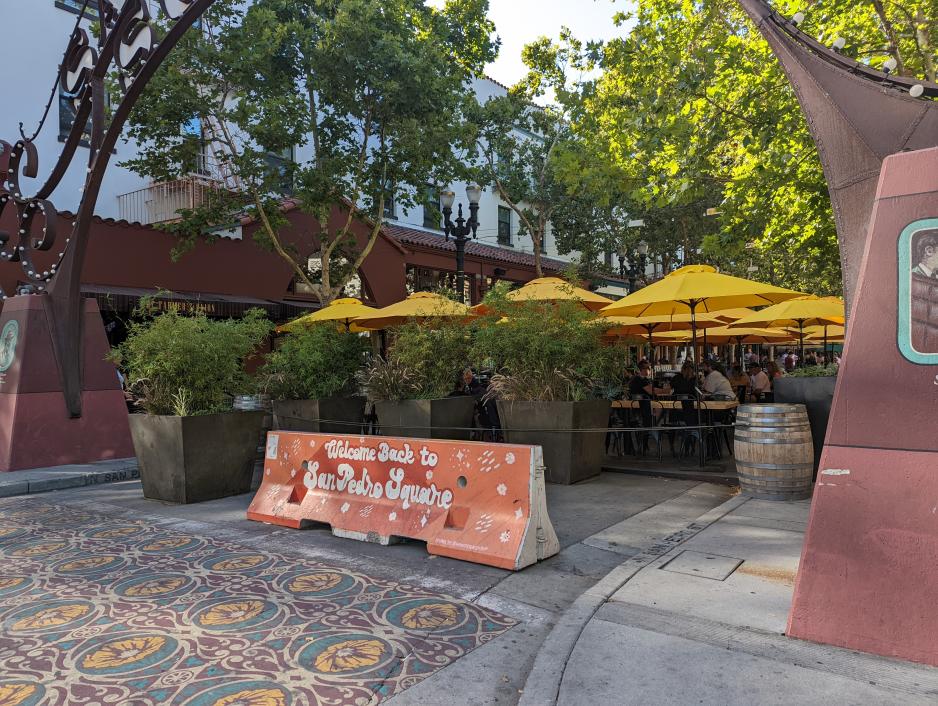Quick build is a project delivery model that uses paint and simple physical objects to rapidly implement changes to streets. The projects are led by public agency, built within a year of planning, planned with the expectation that it may undergo change after installation, and built using materials that allow such changes. It is often used to “test” how a concept works both operationally and for the community or as a short-term, inexpensive solution to an immediate problem while the longer-term permanent solution is being designed or seeking funding.
People for Bikes’ Publication, Quick Builds for Better Streets makes a series of recommendations for a successful quick-build program.
- Establish a project team that includes a specialist in delivering quick-build projects. The team should include nimble and creative engineers, budgeting and procurement experts, and communications and outreach specialists. There must be buy-in from politicians and their appointed executives.
- Develop a system for seizing opportunities. There must be a process in place for a local agency to quickly move into action and prioritize delivering a project. Opportunities could include a community group or business asking for a project that also has support from local elected officials.
- Create deadlines. Projects are more likely to be delivered if the local agency sets internal deadlines. These could be linked to other processes, such as the annual repaving schedule or winter rains.
- Create a reliable funding strategy. Most transportation funding grants are built around the capital project model and require significant administrative time and paperwork to deliver. These are not suitable for low-cost, quick-build projects. Local agencies with quick-build programs typically turn to local funds. Standing budget items for signage, striping, and signals or pavement programs could accommodate quick-build projects.
- Develop a contracting strategy. Quick-build projects are rarely compatible with traditional bidding process. Local agencies work best with on-call contracts or in-house staff.
Body
- Develop an outreach plan and expect lots of comments. Quick-build projects are public beta tests. They allow local agencies to get input on a design and modify it before it becomes permanent. Because quick-build projects are delivered quickly, they can generate concern: that the project is happening too fast or that the project is an excuse not to put in more permanent improvements. A strong, nimble, outreach strategy is essential for success.
- Develop a communications plan. In addition to direct outreach, a quick-build project needs consistent language, images, and processes to help the public understand it is a way to improve public comment, not circumvent it. For example, if a project is billed a “pilot” it should really be a pilot and the methods for evaluating, modifying, and determining the final outcome should be clear to the public.
- Develop a maintenance plan. Low-cost, flexible materials will get damaged and require more frequent maintenance than concrete and other permanent materials.
- Measure and evaluate. Objective metrics are essential for making necessary adjustments and for ultimately demonstrating success. These can include intercept surveys to determine how people are using the project, sales tax data to show impacts on business, travel time data for cars and buses, and counts for bicyclist and pedestrian usage.
